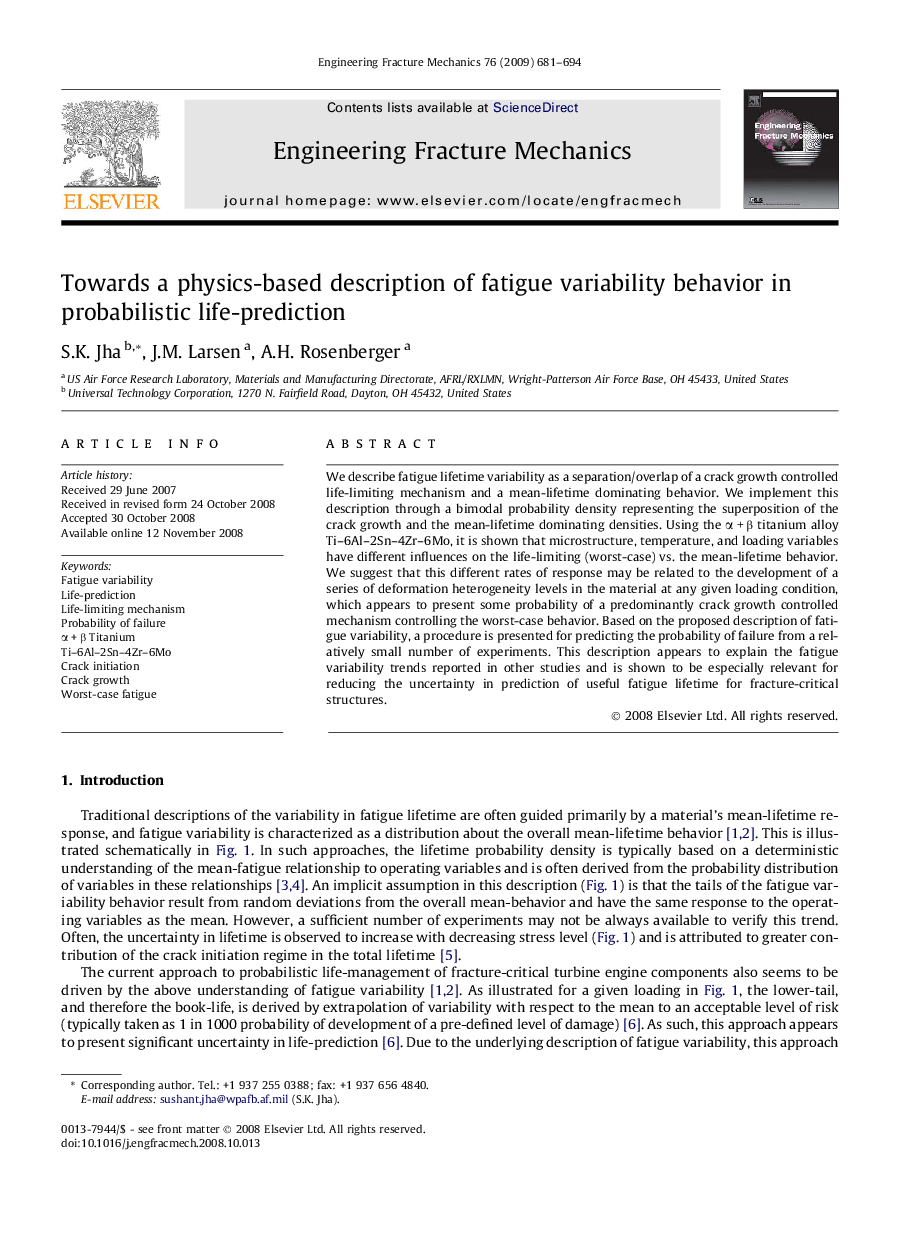| کد مقاله | کد نشریه | سال انتشار | مقاله انگلیسی | نسخه تمام متن |
|---|---|---|---|---|
| 771186 | 897611 | 2009 | 14 صفحه PDF | دانلود رایگان |

We describe fatigue lifetime variability as a separation/overlap of a crack growth controlled life-limiting mechanism and a mean-lifetime dominating behavior. We implement this description through a bimodal probability density representing the superposition of the crack growth and the mean-lifetime dominating densities. Using the α + β titanium alloy Ti–6Al–2Sn–4Zr–6Mo, it is shown that microstructure, temperature, and loading variables have different influences on the life-limiting (worst-case) vs. the mean-lifetime behavior. We suggest that this different rates of response may be related to the development of a series of deformation heterogeneity levels in the material at any given loading condition, which appears to present some probability of a predominantly crack growth controlled mechanism controlling the worst-case behavior. Based on the proposed description of fatigue variability, a procedure is presented for predicting the probability of failure from a relatively small number of experiments. This description appears to explain the fatigue variability trends reported in other studies and is shown to be especially relevant for reducing the uncertainty in prediction of useful fatigue lifetime for fracture-critical structures.
Journal: Engineering Fracture Mechanics - Volume 76, Issue 5, March 2009, Pages 681–694